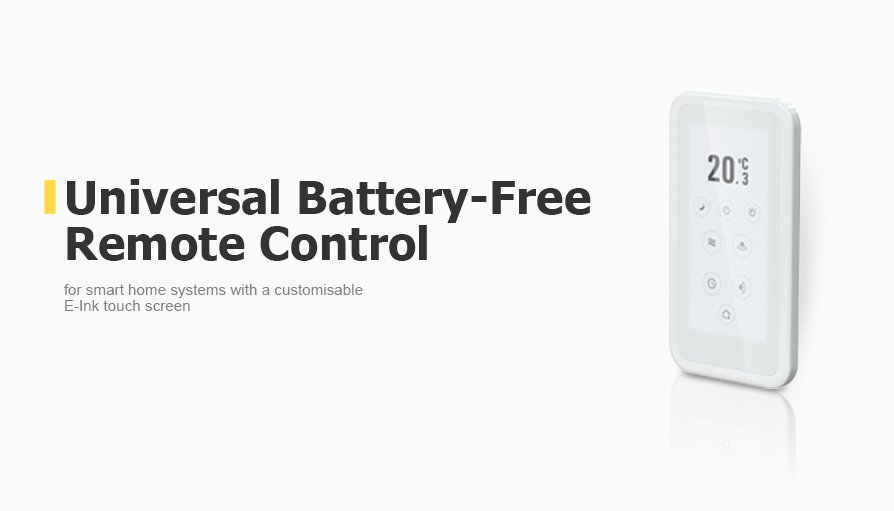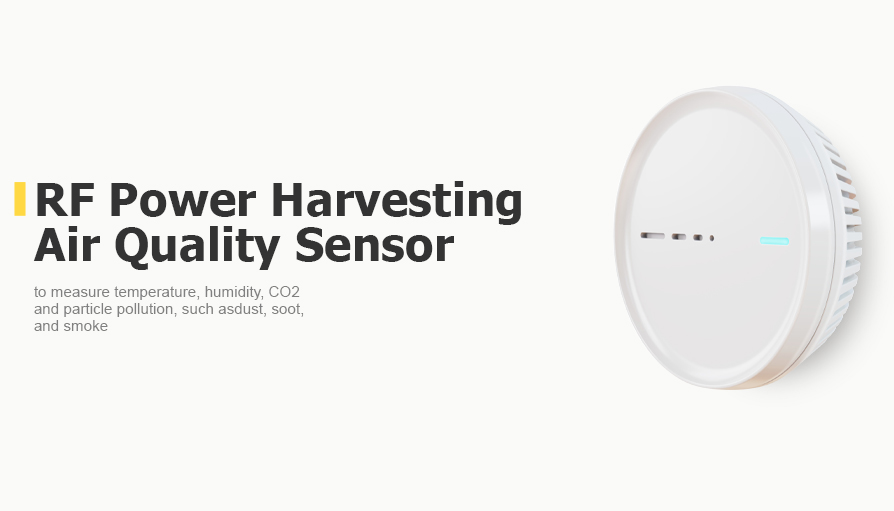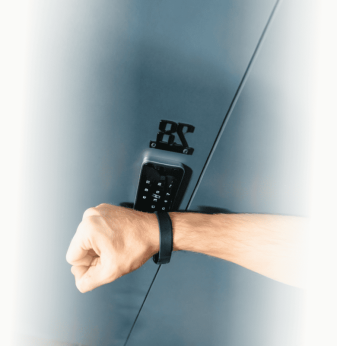Design of Energy Harvesting Solutions for Smart Home
Project in Nutshell: We developed an indoor sensor to analyse air quality and a remote control for smart home systems powered by energy harvesting, i.e. with power delivery by RF energy. By using this trend-setting technology, our client is expected to increase its market reach by 15% and will be able to integrate this approach into other products.
Client & Challenge
A European smart home supplier approached us to develop energy harvesting solutions to add to its product line: a sensor to measure indoor air quality and a universal remote controller for home systems, including multimedia devices.
| Energy harvesting is a trending technology for developing sustainable business solutions without batteries and without the need for charging throughout the entire product life cycle. Energy harvesting ICs convert energy from vibration, light, thermal sources or electromagnetic energy such as radio waves to regulated voltages for wireless sensors and other ultra-low-power electronic devices. Many technology vendors are now following this trend with their line of energy-harvesting chips and circuits: Analog Devices, Nordic Semiconductor, Silicon Labs, Infineon, and others. In our blog, we explained how energy harvesting IoT systems and devices work in general. In this case study, we will cover a practical example of designing smart home devices for our client. |
Solution
Our work involved creating a turnkey solution: industrial and mechanical design, software and hardware development, and client support for production launch.
To implement this project, we built a team of experts with all the necessary knowledge and skills for the design process:
- PCB and circuit design engineers;
- firmware developer;
- Industrial and mechanical designers.
1. Concept Development
We started by conceptualising and drawing the first sketches of the devices, considering that they should be compact and operate as RF energy harvesters without batteries.
Here are some additional requirements for the devices that influenced the planning of hardware and software development:
- The remote control should easily integrate with other smart home devices and systems from various vendors.
- The energy harvesting sensor should provide accurate environmental data more often than traditional devices due to continuous power supply. Battery-powered sensors typically conserve energy to extend their lifespan, while the new design will be devoid of such a flaw.
2. Hardware Design
The sensor and remote control are charged by strong RF signals from WiFi, digital TV, and mobile networks. When these signals are weak or unavailable, they can also operate on the power accumulated in the RF energy harvesting module. 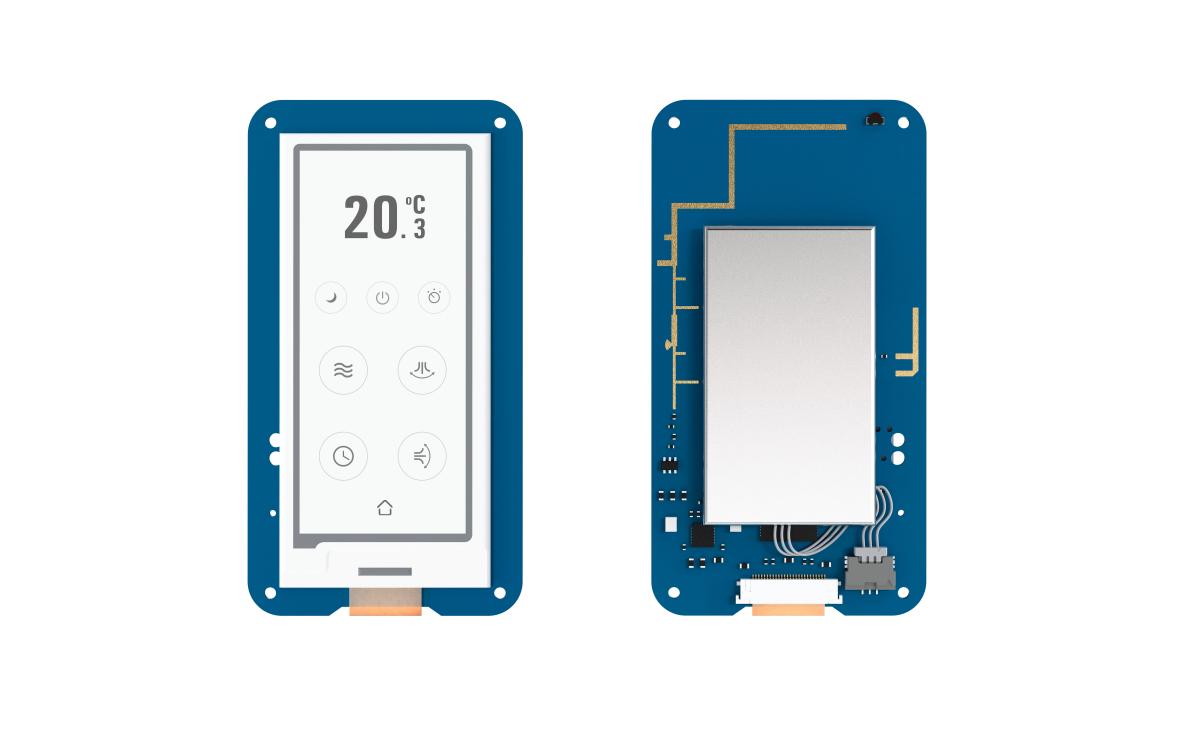
Board and screen models for the remote control
The smart home remote control design with customisable E-Ink buttons
We chose Silicon Labs' low-power xG22E family SoC as the energy harvesting application platform for the remote control that will work via radio channels or infrared emitters.
The design also features an electronic paper (E-Ink) screen with a touch layer, unlike traditional remotes with physical buttons. That's what makes it unique:
- Customisable interface. Users can create and arrange buttons via a connected app, allowing for complete customisation of the buttons' layout and functions.
- Versatility. The digital buttons can be programmed to work with a variety of devices and adapt the remote control to different technologies and interfaces.
- Energy efficiency. E-Ink technology consumes power only when the screen image changes, such as when a button is pressed or the display is refreshed — enough for stable operation as a PF power harvester.
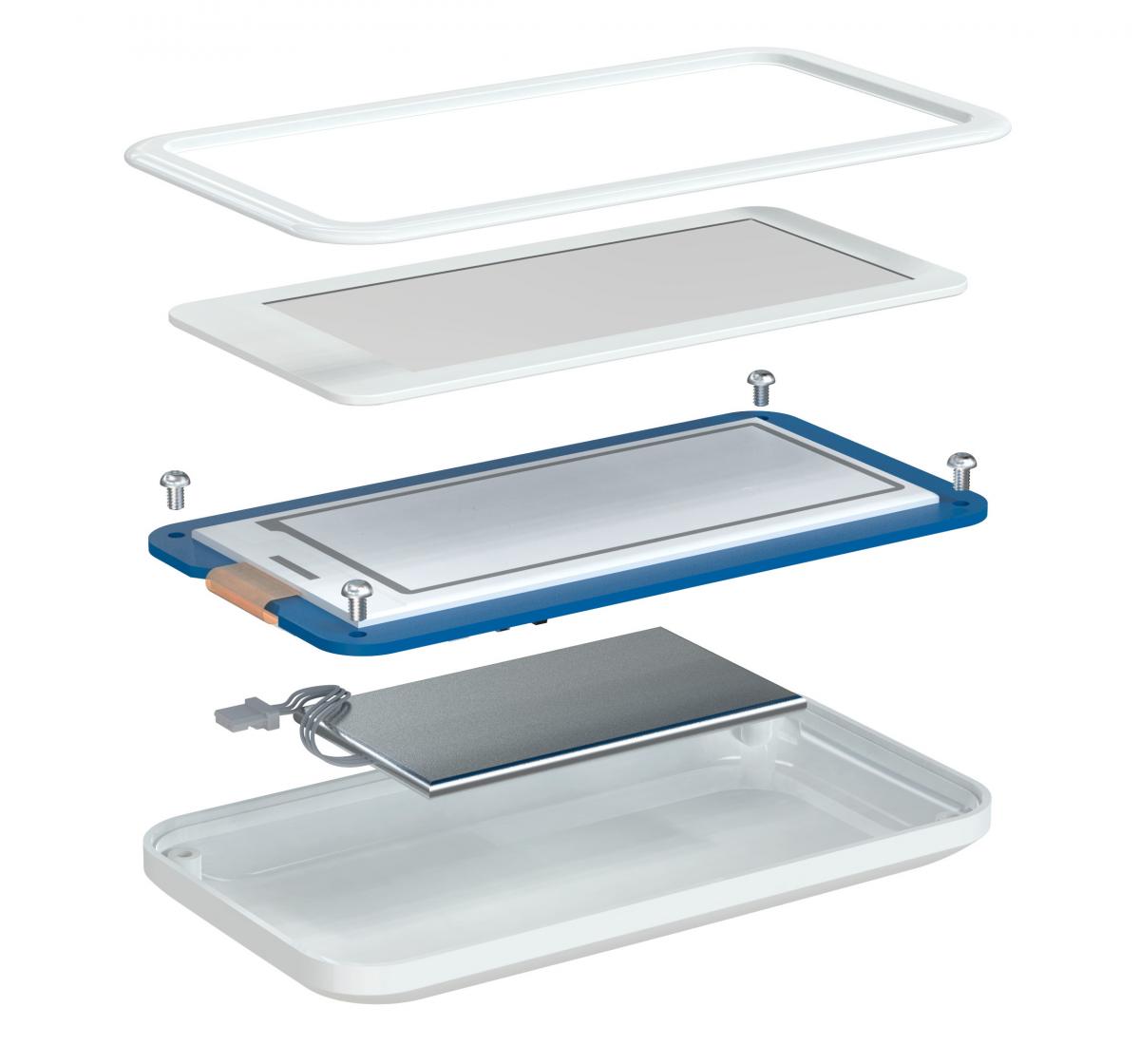
Explosion diagram of the smart home remote control design (top to bottom): a front panel, a screen, a PCB with integrated RF energy harvesting module, a battery for energy storage and a back panel
Air quality sensor design powered by energy harvesting
The smart home sensor is also based on a low-power SoC: the Bluetooth LE SoC nRF52805 from Nordic.
The sensor measures environmental parameters in the room: temperature, humidity, CO2 levels and particle pollution, such as dust, soot, and smoke. The data is transmitted to a gateway or a mobile app via Bluetooth Low Energy (BLE).
3. Manufacturing support
With our engineering support, the devices with RF energy harvesting circuits were successfully sent into series production. Our client plans to produce the first batch of 1,000 devices, ensuring a steady supply to meet the expected demand.
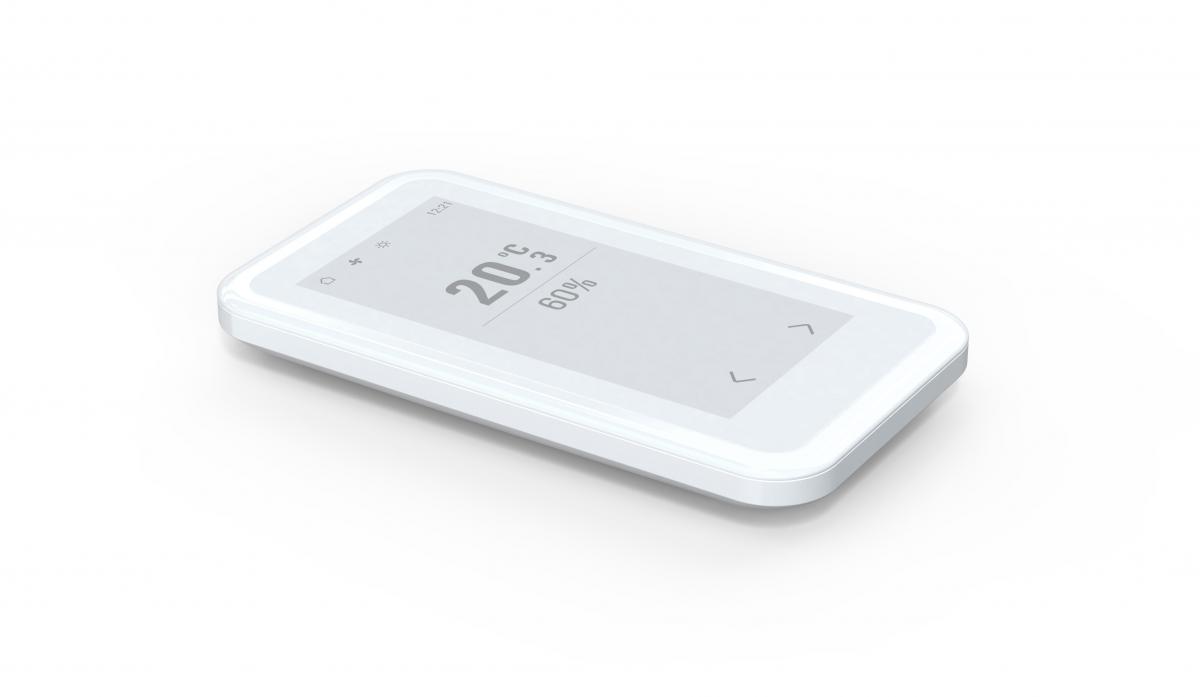
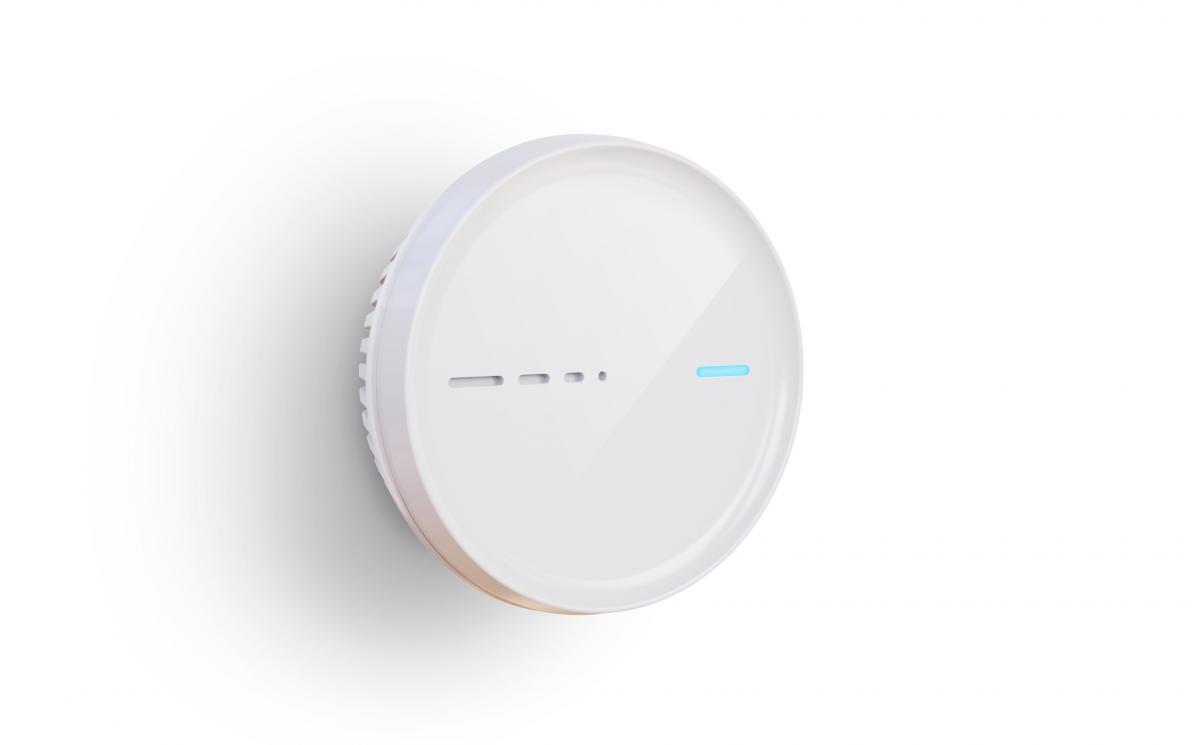
Final design of devices for mass production: a remote control and an air quality sensor
Business Value
Our client has expanded its product line by introducing two new devices: a universal remote control and a sensor to analyse air quality. Thanks to the innovative energy harvesting technology, the devices have features that provide a competitive advantage in the market:
- Sustainable and durable solutions without traditional replaceable batteries, which reduce waste and minimise environmental impact, addressing sustainability problems and solutions in product lifecycle management.
- High efficiency and lower maintenance costs for end users due to reliable continuous and autonomous operation without changing batteries or connection to the power grid.
- The novel technology sets the products apart from others due to their eco-friendliness. This feature can increase our customer's market by 15%. It allows customers not to worry about environmental impact, reinforcing their commitment to sustainability and setting them apart from the competition.
More of What We Do for Smart Home
- Custom Enclosure Design: find out more about our enclosure design services for electronic devices.
- Smart Wireless Thermostats: a case study of turnkey development of a device that would pay for in two years.
- Mobile App for Smart Home: example of developing a mobile app for iOS and Android for smart home systems (100k downloads on Google Play).

